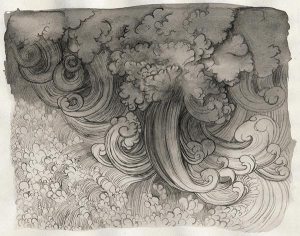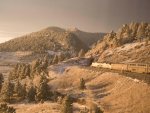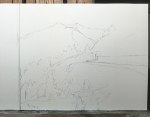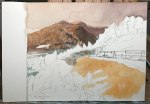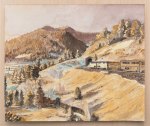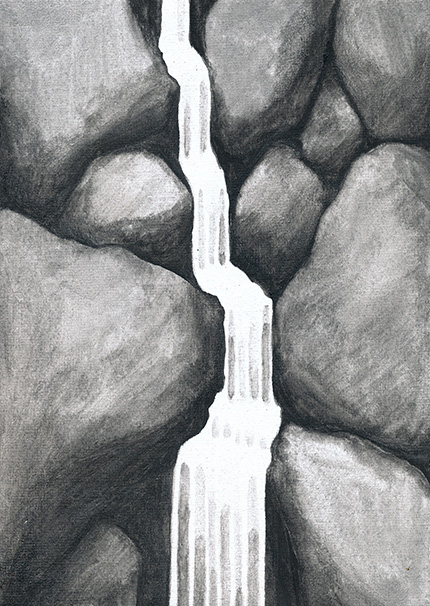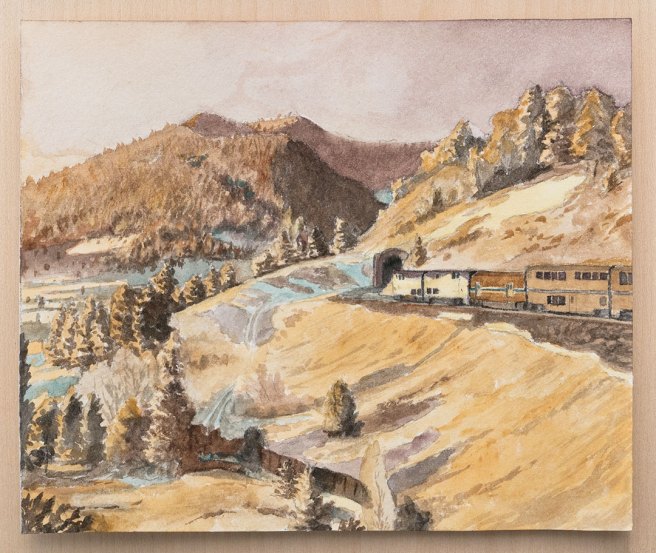
This scene is from a few months ago, when I got to see this area at a different time of day than normal because my train was very late due to snow earlier on its route. It’s the front range of the Colorado Rocky Mountains again. From this point we’re looking south. To the right is the mountains, and just off the paper to the left is a view of the plains and most of the urban corridor that’s up against the mountains.
I used a mix of watercolor and gouache because they were both already on my palette. Most of it was painted with a small flat brush, but I also used a few others. One was a small filbert that was working very well. For watercolor brushes I only have a few filberts but they’re so versatile that I think I should have gotten more filberts instead of mostly rounds. Didn’t go dark enough with a lot of the colors though.
